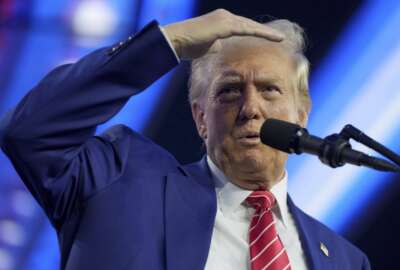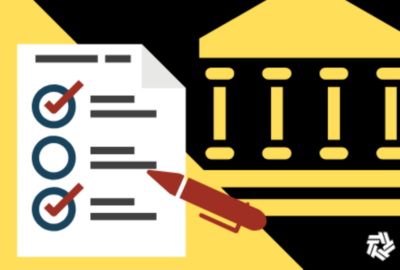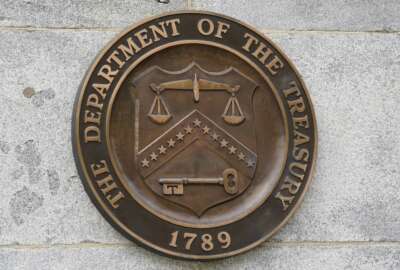The latest chapter in the government’s pursuit of carbonless electricity
"GSA has requested proposals for the supply of retail electricity, at least some of which will be bundled carbon pollution electricity", said Bonnie Bueter.
Last winter a team from the General Services Administration and the Defense Department asked the power industry for something new. A completely carbon-free source of electricity for federal facilities in several states. With another winter coming on, we check in on progress. My next guest on the Federal Drive with Tom Temin is a contracting officer in the retail utility procurement branch of the GSA’s Public Buildings Service, Bonnie Bueter.
Interview transcript:
Tom Temin Let’s talk about what the purpose of this program is generally, what are we trying to accomplish here for the Federal Building Service and with DoD?
Bonnie Bueter Yes. So GSA has requested proposals for the supply of retail electricity, at least some of which will be bundled carbon pollution electricity in the PJM balancing authority, and that covers states in the mid-Atlantic region. And our goal in doing so is to meet the federal environmental goal of achieving 100% carbon pollution free net annually by 2030. And that’s laid out in the executive order 14057 and it’s catalyzing clean energy industries and jobs through federal sustainability. And that was published in December 2021.
Tom Temin All right. Give us the baseline of how a average federal building gets its electricity now.
Bonnie Bueter Yes, in the retail electricity market, which are the markets where you can compete for your electricity supplier. We do, right now, typically, we do shorter term contracts there, usually about 36 months. And we’re looking for retail supply from a third party supplier. Those contracts are normally, like I said, around 36 months, and they’re awarded on a lowest price technically acceptable basis. So this one is for 10 years and it includes a bundled carbon pollution free electricity requirement as well as the retail electricity.
Tom Temin And is this only for government owned buildings? Because in leased space the landlord is the one that buys the power. Is that correct?
Bonnie Bueter This procurement represents 16 different agencies and has 182 accounts in several different states, including Delaware, Pennsylvania, New Jersey, Maryland, Illinois and Ohio. So it’s a very diverse portfolio. And the specifics of which buildings are representing is in the solicitation which is currently posted on sam.gov.
Tom Temin All right. And you said it’s for 10 years. And what kind of market research is required to even know if such providers exist in the first place?
Bonnie Bueter That is a great question. And one of the what I would say more fun parts of my job is that we really did market research for well over a year. We did market research in coordination with DoD, also with Department of Energy. We met with lots of third party suppliers asking them about their portfolios. How would they be able to meet this requirement? What terms and conditions would they need? So we really designed this in a way that kind of met the balance between what our market research was telling us and what we needed. But we did a lot of market research, attended a lot of conferences. We published a joint request for information with the DoD. And then as part of that request for information, we held an industry day in DC where we met with these third party suppliers and they could directly ask us questions and we could have a conversation one on one in person about how to design a requirement that would get us towards our goal in that they were able to provide.
Tom Temin And briefly, what precisely is the requirement?
Bonnie Bueter So the requirement is for approximately 1.1 million megawatts of retail electricity, at least part of which is bundled carbon pollution free electricity, and the bundled carbon pollution free electricity is when the electricity is purchased from the qualifying generation resource along with the energy attribute certificates. So they are purchased from the same requirement, the same source. They aren’t separated. And that’s different because a lot of our other procurements have been for what we call unbundled energy attribute certificates, and that’s where the certificate is secured separately from the electricity. So this one is unique in that we are looking for that bundled product. So first it has to meet the bundled CFE requirement, and the executive order has a few conditions or qualifications in order to be counted towards those goals, one of which it has to be carbon pollution free. So it has to be produced from source that generates no carbon emissions. So that’s a little bit different than some of the other renewable sources. It also has to be placed in service on or after Oct. 1, 2021, either as a new resource or as a new capacity at an existing resource that’s been modified to increase output. So that’s very different and that’s probably one of the biggest challenges, because we are looking for that new resource and we are encouraging that additionality through that requirement. Lastly, it has to be delivered to the same balancing authority or grid region where the federal government has its offtake. So in this case, it’s PJM. We couldn’t satisfy this requirement with, let’s say, unbundled EACs from ERCOT. We’d have to look at bundled products in PJM. So that’s kind of the highlights of the procurement.
Tom Temin We were speaking with Bonnie Bueter. She’s a contracting officer in the retail utility procurement branch of the General Services Administration, Public Buildings Service. This is complicated because you have the grid, you have the generator, and the generator has to have some generation that is not burning something, in other words. So the big utilities, do both and are there utilities that are coming into existence that only do it one way and then put that onto a carbon free way and then put that onto the grid.
Bonnie Bueter Yes, that’s right. So that’s a good point, because it hits on the other part of what our requirement is for. I just described meeting the bundled CFE requirement. The other part is the retail electricity requirement. So when you flip on your light switch, a certain amount of power coming from the grid is clean, and that’s what we call our grid supplied CFE. So that also counts towards our goals just by using the clean energy that’s already on the grid. And in PJM, for the purposes of this procurement, we’re assuming that grid supplied CFE mix is around 65%. So we get that just by using that retail electricity.
Tom Temin So you don’t have to have separate wires from a windmill to the federal building, in other words.
Bonnie Bueter No. And that was one you mentioned market research. That was part of what we really looked at in our market research and what led us through that process what we decided was that we’re really not looking to do a contract directly with a developer like a power purchase agreement. We’re looking for a contract with a third party retail supplier who offers a portfolio of diverse CFE projects and resources. And we feel like that really helps mitigate the risk and allows them to manage their portfolio, because GSA doesn’t want to get in the business of a development or telling a developer how to produce their energy. We really want that third party to maintain that portfolio, to have it as diverse as possible, and then deliver that energy to GSA through the grid.
Tom Temin And that requirement that it must have come online after the date, I believe you said 2021. That leaves out nuclear, doesn’t it?
Bonnie Bueter For the most part, currently it does. Nuclear is in the definition of CFE, so it’d have to be if it’s not as we know, a new nuclear source that came on since 2021. But you can look at a source that’s been modified to increase capacity and then we can use just the part of the increased capacity towards our goals. So if you were to revitalize a nuclear station and it did increase its capacity, that does meet the definition. So new nuclear not really available right now, but it is part of the definition.
Tom Temin Because there’s this whole class of localized reactors that are starting to come into the market. The data center people want to put those in. And I think people are envisioning the day when a complex will have its own generator with these small scale new technology reactors. But that’s kind of ahead of your game at this point, fair to say?
Bonnie Bueter Yes, that is not the focus of the solicitation at this time.
Tom Temin All right. So this request for information came out in February of earlier this year. Where do you stand now? What’s the status of this whole acquisition?
Bonnie Bueter I’m very excited to report that we did publish a solicitation. It closed on Oct. 10 and we are currently evaluating technical proposals.
Tom Temin So you got enough of a response to have an actual competition in the classic sense?
Bonnie Bueter I can say that we are evaluating proposals.
Tom Temin Sure. No, I understood, it’s an acquisition. You don’t want to name names and we’re not going to ask for names or how much should this guy charge? And DoD is your partner in this, so you must have a counterpart from the Defense Department that’s evaluating also.
Bonnie Bueter So DoD has its own separate procurement and they have a different timeline and their procurement and what they’re looking for is slightly different. And I really wouldn’t be able to speak to those specifics. But I can tell you that GSA coordinated, the executive order really envisions a whole of government approach. And GSA coordinated with DoD and continues to collaborate with them. And we are in constant contact in meetings and sharing resources and information. So it’s very much a coordinated and collaborative approach. But I will emphasize that they are very separate solicitations.
Tom Temin And what’s your general goal for a date for throwing the switch on all this?
Bonnie Bueter Well, we would love one in the beginning of January.
Copyright © 2025 Federal News Network. All rights reserved. This website is not intended for users located within the European Economic Area.
Tom Temin is host of the Federal Drive and has been providing insight on federal technology and management issues for more than 30 years.
Follow @tteminWFED






